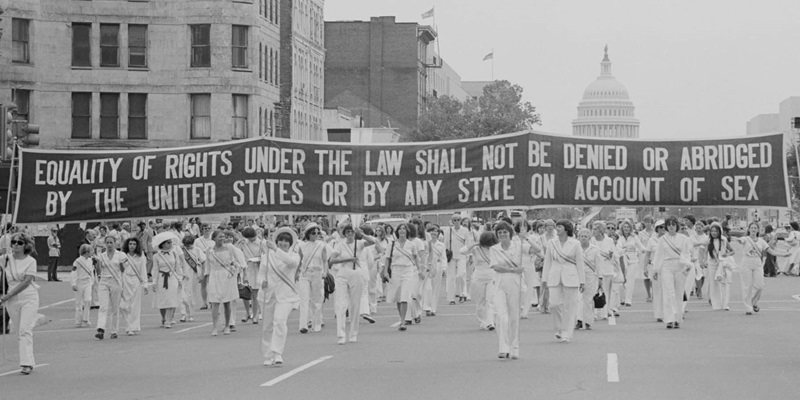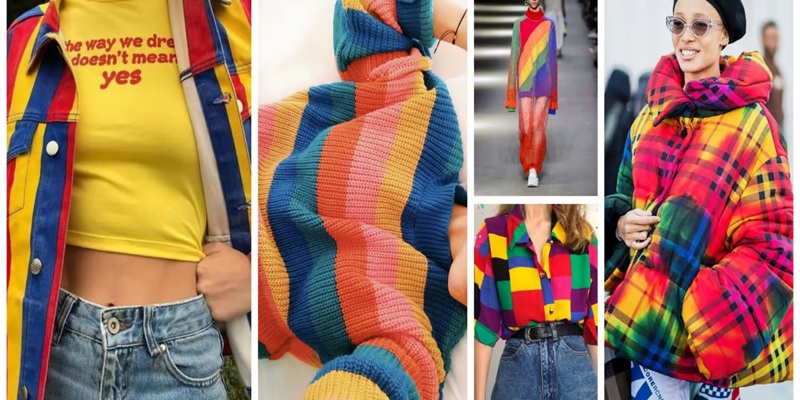Traversing the annals of antiquity, fashion as protest has transcended the superficiality of mere ornamentation, ascending into an unequivocal mechanism wielded by individuals and collectives to promulgate their politico-philosophical doctrines and to subvert societal mores. Garb is no longer a reflection of self-expression; it has been reconceptualized as a palimpsest for articulating insurgent messages, solidarity, and identity.
The ontogeny of political fashion trends has persistently mirrored the prevailing socio-political zeitgeist of their respective epochs. From the suffragists’ alabaster attire symbolizing purity and egalitarianism to the Black Panthers’ adoption of sable leather jackets and berets as symbols of defiance and empowerment, political fashion trends have been pivotal in crafting the semiotics of dissent. These trends are not happenstance but are meticulously orchestrated selections that encapsulate the ideologies and aspirations of their adherents.
The suffragists’ selection of white garb in the nascent 20th century was an intentional manoeuvre to synchronize their crusade with the ideals of purity and righteousness.
The Black Panthers' militaristic attire was a calculated endeavour to exude strength and unity, ensuring their memorable presence in a society that systematically ostracized them.
The punk insurgency of the 1970s, with its embrace of tattered garments, safety pins, and provocative insignias, sought to rebel against the establishment and upend conventional norms.

As we approach 2024, statement clothing 2024 is crystallizing as an influential force within contemporary protest movements. With the ubiquity of social media and the amplified visibility of global problems, attire has become an even more formidable tool for political discourse. Statement Clothing 2024 is characterized by audacious, unwavering messages that resonate with the extant socio-political climate.
Sustainability: Many protestors gravitate towards vestments fabricated from sustainable materials, underscoring their unwavering commitment to environmental stewardship.
Customization: Technological advancements have engendered the possibility of bespoke garments that mirror individuals’ singular political ideologies.
Inclusivity: Statement Clothing 2024 often emphasizes themes of diversity and inclusivity, with designs advocating for equity and social justice.
The influence of political fashion trends on societal constructs is profound and multifaceted. Attire can challenge entrenched orthodoxies, incite discourse, and precipitate change. When individuals witness others adorned in garb that aligns with their convictions, it can cultivate a sense of solidarity and urge them to partake in the movement. Conversely, political fashion trends can engender opprobrium and polemics, often confronting deeply embedded societal paradigms.
Visibility: Statement Clothing 2024 ensures that pivotal issues remain within the public discourse, compelling individuals to confront discomfort.
Empowerment: Donning politically charged attire can endow individuals with a sense of agency, empowering them in their quest for justice.
Dialogue: Fashion as protest fosters dialogue among divergent groups, bridging divides and cultivating a more inclusive society.

Fashion as protest is poised to continue evolving, with nascent political fashion trends emerging in response to the ever-shifting political landscape. As the world becomes increasingly interconnected, we anticipate that clothing 2024 will encompass a broader array of issues, from climate change to human rights. Furthermore, the burgeoning accessibility of fashion technology will democratize participation in this form of protest, enabling more individuals to articulate their voices through their attire.
The progression of fashion as protest has undergone a profound metamorphosis from employing intricate, cryptic motifs to a more flagrant and assertive articulation. Historically, protest vestments often employed chromatic symbolism and discreet emblems that could surreptitiously align with prevailing sartorial norms while subtly communicating defiance. In stark contrast, contemporary political fashion trends are increasingly delineated by their audacity and candour, exploiting avant-garde graphic design, iconographic slogans, and cutting-edge digital fabrication techniques to project unequivocal declarations.
Graphic Declarations: The advent of sophisticated digital fabrication has expedited the mass dissemination of attire adorned with conspicuously political proclamations, rendering statement clothing 2024 more pervasive and impactful than in any preceding epoch.
Subversive Opulence: Paradoxically, haute couture has begun to amalgamate fashion elements as protest within its oeuvre, utilizing luxurious textiles as subversive tools of insurrection against the very capitalist structures that sustain them.
Gender Fluidity: In defiance of archaic gender binaries, modern political fashion trends often embrace an androgynous aesthetic, with protest attire that intentionally transcends gender boundaries, advocating for inclusivity and the dismantling of conventional societal frameworks.
The theoretical construct of intersectionality has exerted a transformative influence on fashion as a protest. It acknowledges that individuals frequently navigate multiple axes of marginalization concurrently, each entailing its distinct set of adversities. This has precipitated the advent of political fashion trends that are markedly more inclusive and sophisticated, addressing an array of intersecting social justice issues within a singular garment or sartorial ensemble.
Race and Gender Confluence: Statement Clothing 2024 frequently integrates motifs that address the dual spectres of racial inequity and gender discrimination, amalgamating symbols and catchphrases from variegated movements to engender a cohesive narrative.
Environmental and Social Convergence: The burgeoning cognizance of anthropogenic climate change has created protest attire that champions ecological conservation and social justice, synthesizing these imperatives into a unified visual manifesto.
Advocacy for Disability Rights: Increasingly, fashion as a protest encompasses designs that foreground the rights and tribulations of individuals with disabilities, utilizing clothing as a vector to illuminate issues frequently relegated to the periphery of social consciousness.
The proliferation of digital media has irrevocably altered the dissemination and reception of fashion as a protest. Social platforms such as Instagram and TikTok have emerged as principal venues where political fashion trends are exhibited and rapidly propagated, often achieving viral status and reaching an expansive global audience within moments.
Global Amplification: Digital platforms facilitate the transcendence of geographical limitations for statement clothing in 2024, transforming localized demonstrations into global phenomena by showcasing protest garments to a worldwide audience.
Influencer Advocacy: Digital influencers and public figures frequently leverage their platforms to elevate fashion as a protest, often serving as catalysts for political trends that might otherwise remain niche or obscure.
Instantaneous Production: The immediacy afforded by digital platforms enables the rapid conceptualization and distribution of protest attire in direct response to unfolding events or emergent political developments, rendering statement clothing 2024 both responsive and contemporaneously relevant
In summation, fashion as a protest endures as a potent modality of political expression, with political fashion trends and statement clothing in 2024 serving as pivotal instruments in defining the visual rhetoric of contemporary movements. As we navigate the future, we must recognize the significance of attire as more than mere self-expression; it is a catalyst for transformation, capable of uniting individuals, challenging established norms, and advocating for a more just and equitable world.